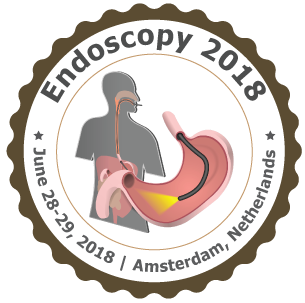12th International Conference on Abdominal Imaging and Endoscopy
Amsterdam, Netherlands

Mona Yehia Khattab
Alexandria University, Egypt
Title: The role of multi-detector CT (MDCT) angiography in assessment of the anatomical variants in celiac axis
Biography
Biography: Mona Yehia Khattab
Abstract
Aim
To study the role of MDCT angiography in assessment of the variations in celiac arterial trunk (CAT) and hepatic arterial system (HAS), which are of considerable importance in liver transplantation, laparoscopic surgeries, abdominal interventions , TACE and abdominal penetrating injuries.
Methods & Results
We prospectively studied 312 patients presenting with abdominal pain with age ranging between 4-85 years imaged by:
-
MDCT scans including non-enhanced phase and post-contrast Arterial phase (25-30 seconds after contrast injection).
Regarding the CAT and/or HAS variations 100 patients were documented, from which:
-
8 patients had isolated variations in CAT,
-
64 patients had isolated HAS variations
-
28 patients had CAT variations associated with HAS variations.
The most commonly noted variant in CAT was gastro-splenic (20 cases), while the most commonly noted variant in HAS was replaced right hepatic artery from SMA (34 cases).
We adopted a new method for categorizing the different caeliac and hepatic arterial variants into a new comprehensive classification.
Conclusions
The celiac axis and its branches are critically important arteries that supply blood to the vital solid and hollow abdominal viscera of the foregut. There are many potential anatomic variants. MDCT angiography is widely used as the first step in evaluation. Our comprehensive classification can easily help with the final imaging diagnoses and thus proper patient treatment.

